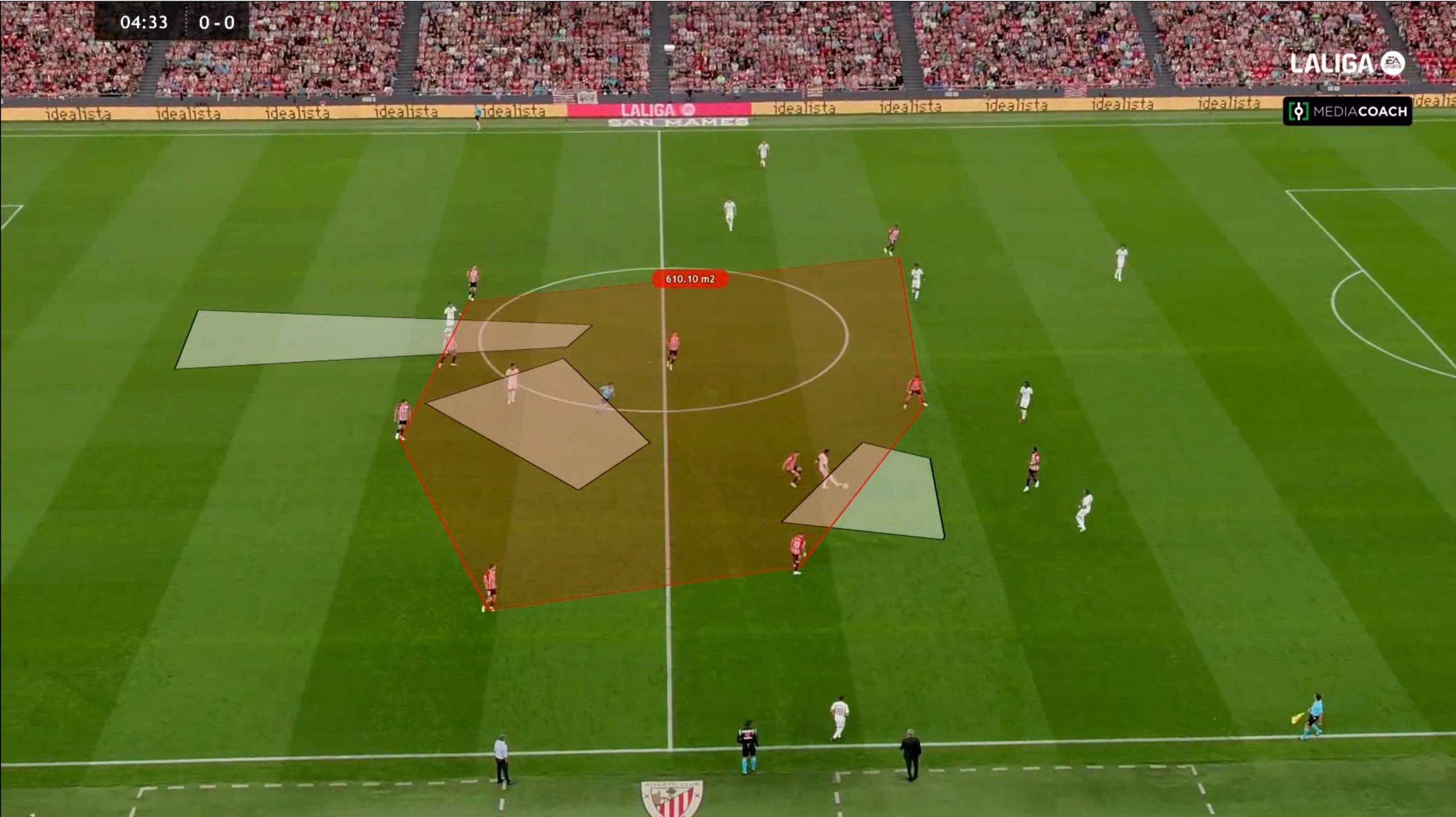
09 Ago Innovating Tactical Analysis: Measuring a Team’s Interior Play Potential with Advanced Space and Movement Tools
Introduction
In modern football, the balance between interior play and wing play is essential for breaking down opponents and creating goal-scoring opportunities. While wing play has traditionally been a dominant tactic, a team’s ability to generate interior play—moving the ball through the central spaces between the opponent’s defensive lines—has become a crucial component of offensive success. This article introduces an innovative model for objectively measuring a team’s interior play potential by combining advanced analytical concepts such as modified Convex Hulls and adapted Voronoi diagrams.
The Challenge of Measuring Interior Play
Interior play is more than just moving the ball to the center of the pitch. It involves creating and exploiting useful spaces within the opponent’s defensive block, allowing attacking players to receive the ball in dangerous positions. Measuring this ability has been a challenge due to the complexity of player movement and the constant interaction between offensive and defensive lines.
Methodology: Combining Convex Hull and Voronoi
The foundation of this model lies in two spatial analysis tools: the Convex Hull and Voronoi diagrams, adapted to reflect the dynamics of football.
- Modified Convex Hull: Defining the Opponent’s Defensive BlockThe Convex Hull is a tool that defines the perimeter of the opponent’s defensive block, essential for identifying the boundaries within which a team must work to generate interior play. In this case, the Convex Hull is modified by excluding the most advanced attacking player if they are clearly outside the defensive block, focusing on the real space where tactical interaction occurs.
- Adapted Voronoi Diagrams: Mapping Useful SpaceVoronoi diagrams divide the pitch into areas where each player is most likely to reach the ball first. For this analysis, the Voronoi cells are adapted by considering each player’s speed and acceleration, providing a more accurate model of the useful space each player can cover. The Voronoi areas generated by players within the opponent’s Convex Hull represent the spaces that can be exploited for interior play.
Practical Application: Analyzing Interior Play in Action
This model has been applied in real matches, as demonstrated in the accompanying video, which analyzes Real Madrid’s possession against Athletic Club. During this analysis, we observe the spaces that Real Madrid players create within Athletic’s defensive block, using their movement and ability to find space to generate effective zones for ball reception. The constant «dance» between offensive and defensive players, who adjust their positions in response to the opponent’s movements, is clearly illustrated in the video, highlighting how interior play opportunities can be created through intelligent spatial control.
Conclusions: The Key to Effective Interior Play
This innovative analysis model provides coaches with a valuable tool for measuring and improving their teams’ interior play. By understanding how to create and exploit spaces within the opponent’s defensive block, teams can enhance their ability to disrupt opponents and create goal-scoring opportunities. The key lies in the dynamic combination of attacking players who intelligently move within the defensive block and a continuous analysis of how these movements affect the available space.
Future Perspectives: Towards a Smarter Football
With the integration of artificial intelligence and machine learning, this model can further evolve, enabling real-time predictions and tactical optimization during live matches. Football is entering a new era of analysis where science and technology play a crucial role in strategic decision-making. This approach not only improves team performance but also adds a new dimension to our understanding of the game.


